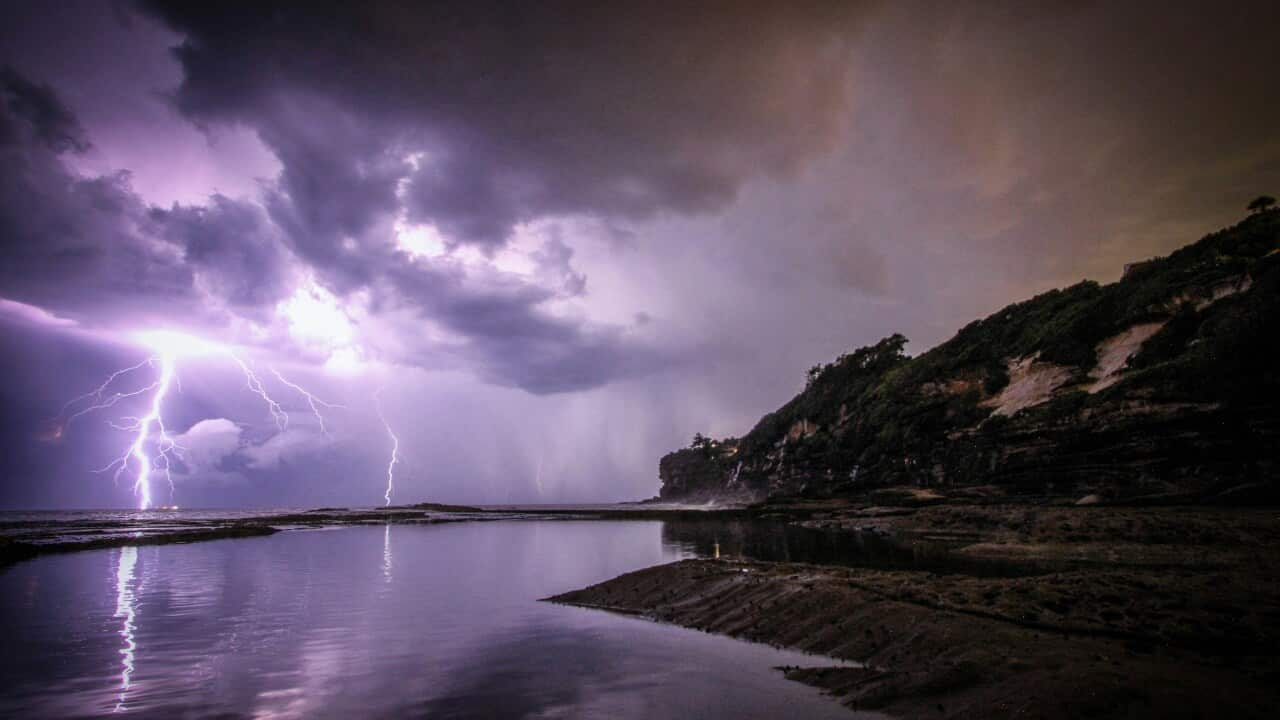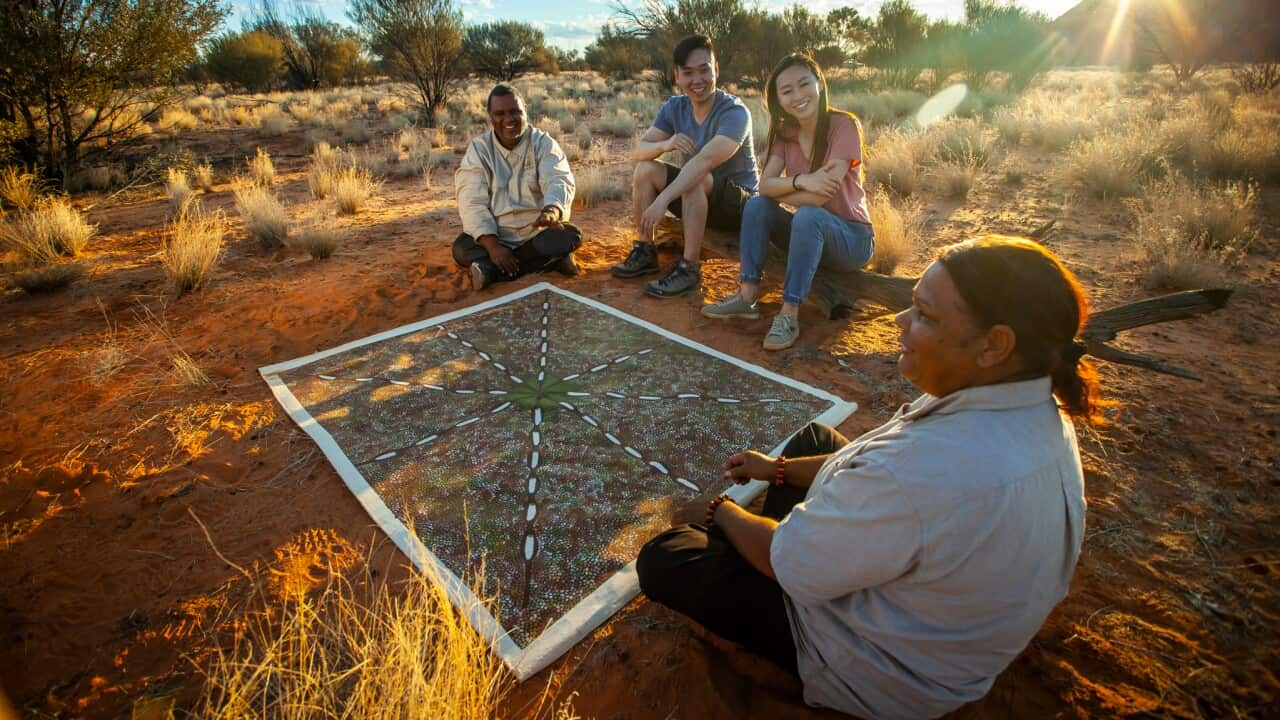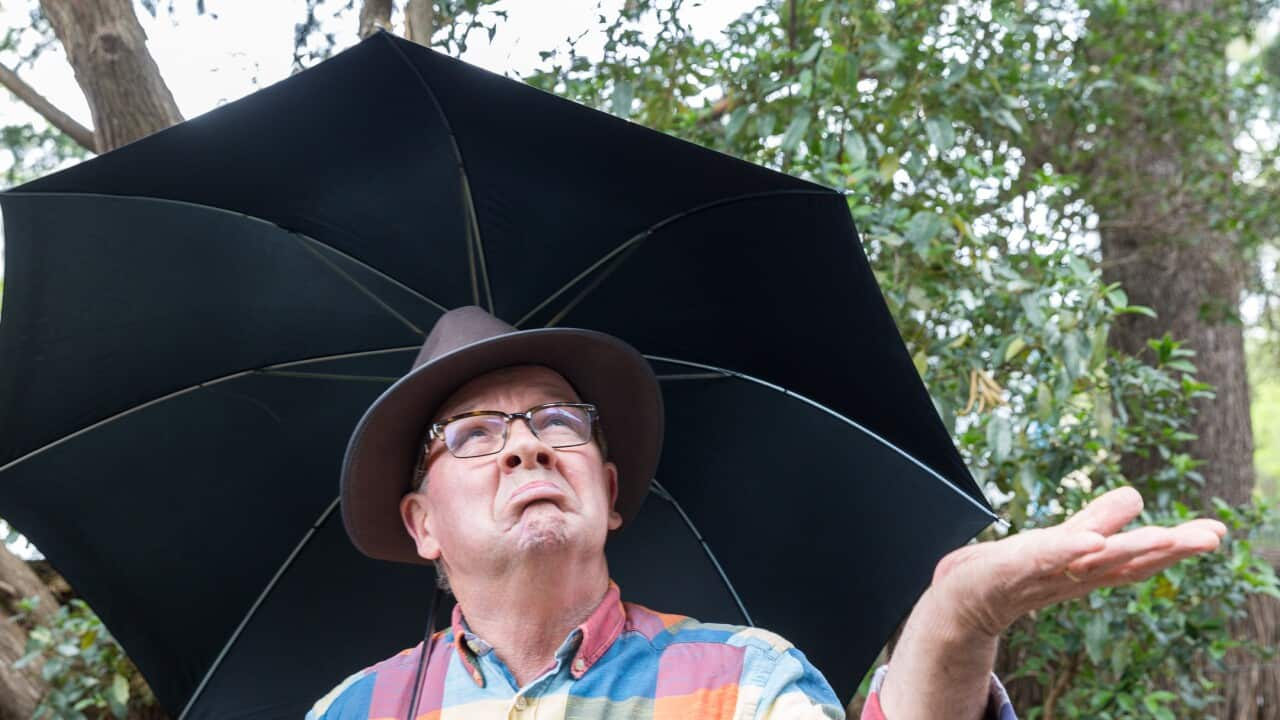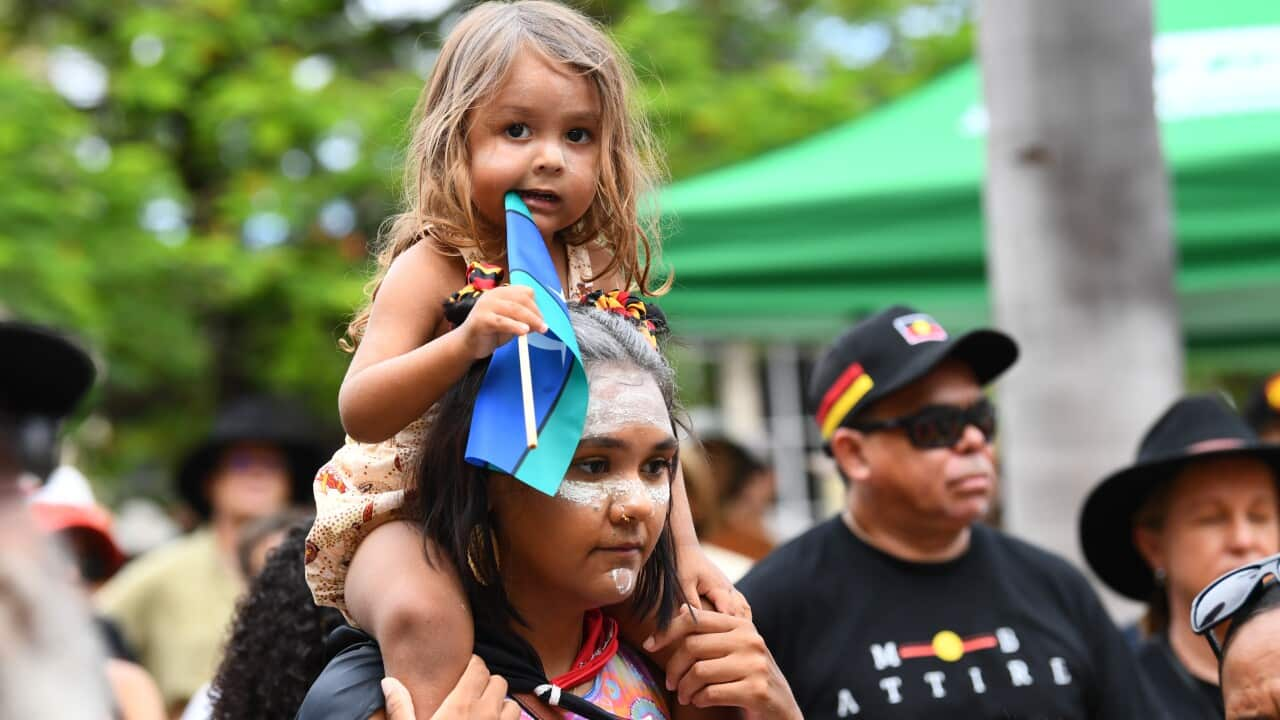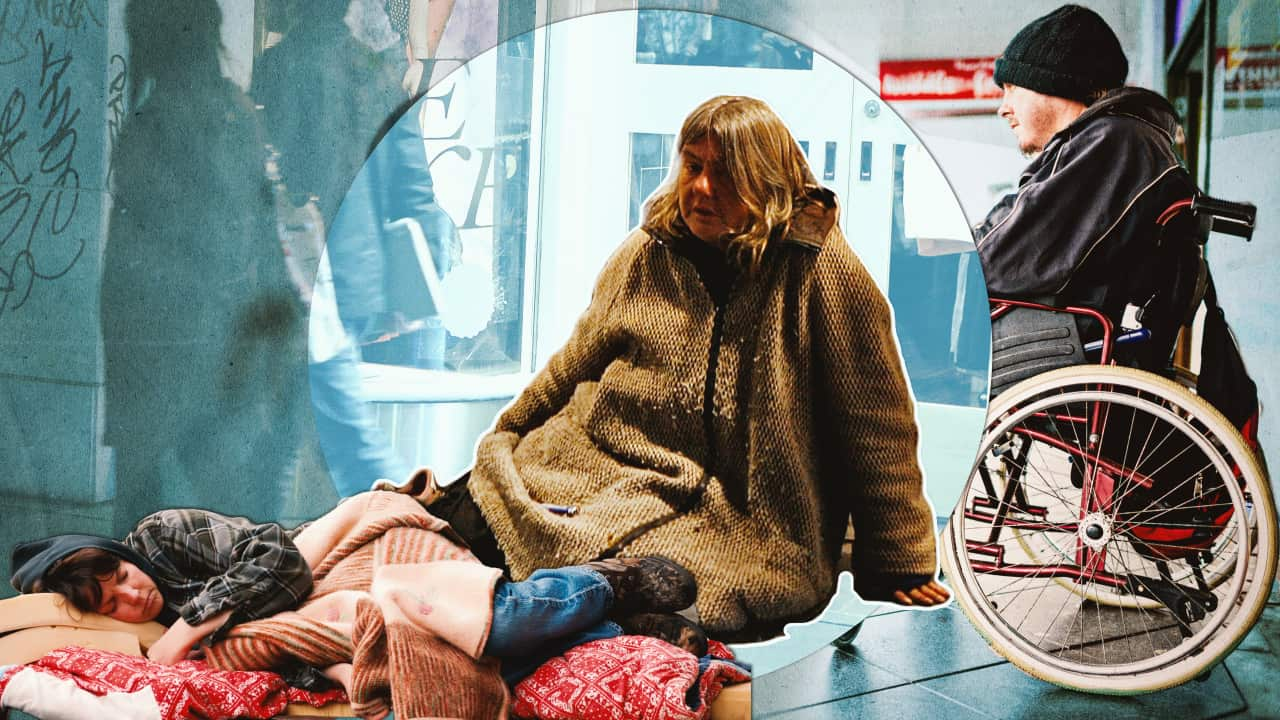Key Points
- Ang kaalaman ng First Nations tungkol sa panahon at mga season ay naipapasa mula henerasyon sa pamamagitan ng oral at visual storytelling at mga tradisyong pangkultura.
- Ang seasonal cycles ay inilalarawan ng First Nations na nagkakaiba-iba sa buong Australia depende sa kanilang lokasyon.
- Kasama sa kaalaman ng First Nations tungkol sa panahon ang pag-unawa kung paano konektado ang pagbabago sa kilos ng mga hayop o paglago ng mga halaman sa mga pagbabago sa panahon at mga season.
Ang pag-unawa sa lagay ng panahon at mga panahon ay mahalagang bahagi ng kaalaman ng mga Aboriginal at Torres Strait Islander, na pinanday sa loob ng libu-libong taon.
Ang panahon ay may malaking epekto sa mga siklo ng buhay ng mga hayop at halaman, at ang pag-unawa sa mga koneksyong ito ay napakahalaga para sa kaligtasan ng tao—lalo na sa Australia, kung saan ang matinding panahon at mahihirap na kalikasan ay nangangailangan ng pagiging handa at kakayahang mag-adapt.
Ang lahat ng bagay ay konektado—ito ang sentrong pilosopiya ng kultura ng mga First Nations at sa loob ng libu-libong taon, masusing pinag-aralan ng mga Aboriginal at Torres Strait Islander ng Australia ang kanilang kapaligiran.
Natutunan nila ang mga madalas na hindi halatang koneksyon sa pagitan ng klima, mga panahon, at ang mga pagbabago sa buhay ng mga hayop at halaman sa paligid nila.
Ayon kay Aunty Joanne Self, isang Gadigal woman mula sa silangang bahagi ng Australia.
Lumaki siya na natututo tungkol sa lagay ng panahon, at kalikasan mula sa mga kaalamang ipinamana sa kanilang pamilya at komunidad.
“Intricate understandings of weather systems, seasons and the environment, is important for the survival of all people. For First Nation’s people, our deep connections to this knowledge allowed us to flourish in this fragile environment,” paliwanag ni Aunty Joanne.

Moodjar, the native Christmas tree Credit: TerriAnneAllen/Pixabay
“There are many weather events that affect this fragile continent of ours, whether it's thunderstorms or drought, First Nations people have prepared for them and they have knowledge systems that allow survival through cyclones, or understanding safety in a thunderstorm, preparing for drought,” pahayag ni Aunty Joanne.
“When we look at the way that weather can affect all humans, we often want to have control - our knowledge is what keeps us safe. Diarra-murrahmah-coing, the sun is setting red, and that means it'll be good weather tomorrow.”
Samantala, sa kanlurang bahagi ng Australia, si Jordan Ah Chee, isang Indigenous Knowledges academic sa Murdoch University, na ipinanganak sa Kimberley region at may koneksyon sa mga Bindjareb, Wardandi, Palyku, Nyikina, at Yawuru peoples ay may ibinahagi.
“There's this notion that our people were nomadic, but that kind of leans toward us not having a place or not having a home."
We very much move with the seasons and we would move from place to place in a sustainable way.Jordan Ah Chee
“Aboriginal and Torres Strait Islander people have fostered a deep connection throughout the millennia, with the lands, the waters and the sky – and through this connection we've developed this intricate knowledge that has helped us to thrive in this place – and it’s this underlying notion of that everything is connected.”
Ang malalim na koneksyon ng First Nations people sa lupa, kalangitan, at tubig ay nagbibigay sa kanila ng masusing pag-unawa kung paano naipapakita ng pagbabago ng mga season ang mga pagbabago sa kapaligiran.
“So unlike western ways of knowing where you tie the seasons to specific dates within the calendar, knowledge of when the seasons are coming and how they flow throughout the year, came through changes in the landscape and changes in animal behaviour and changes to the environment,” sabi ni Ah Chee.
“And that would dictate where we would be at certain times of the year, what food was available, whether we would be on the coast or inland, so definitely an understanding of the weather and seasons was very important to our way of life.”

Fire stick farming Credit: Christian Bass/Unsplash
“When we think of this probably the first thing to come to mind is fire stick farming. Fire stick farming allows us to keep the fuel load low on the ground so that should a fire start from lightning or other events, that the fuel loads not too high,” paunawa ni Aunty Joanne.
“But it also allows us to ensure that fresh green shoots are there ready for those species of mammal that really like them.”
Ang seasonal cycles na inilarawan ng First Nations peoples ay nag-iiba depende sa kanilang lokasyon sa buong Australia.
Sa Noongar country sa timog-kanlurang bahagi ng Western Australia, anim na season ang kinikilala sa loob ng isang taon. Ang Birak ang hudyat ng pagsisimula ng tag-init mula unang bahagi ng Disyembre—isang panahon ng mainit na klima at pagdiriwang.
“Birak is related to heat and the sun and fire, it's when it's getting hotter and it's usually known as the season of the young, and is a time of celebration, and this season was marked by snakes and reptiles shedding their skins, chicks leaving the nest and young animals transitioning into adulthood and making their way out into the world,” dagdag ni Ah Chee.
“One significant change in the landscape is these beautiful orange yellow flowers of the moodjar, or the Christmas tree, which is a very spiritually significant tree for the Noongar people. And around this time, depending on the weather and climate, was when cultural burning would occur.”
Ang mga bagay sa kalangitan tulad ng buwan at ang cycle nito ay ginagamit ng First Nations people upang matukoy ang paparating na pagbabago sa panahon.
In First Nation's knowledge systems moon halos depict the onset of rain.Aunty Joanne Selfe
“Now to think about it – ice crystals are suspended in the upper atmosphere, moonlight is refracted and reflected by the ice crystals, and it can result in the appearance of a halo around the moon. Now even contemporary science recognizes that moon halos often proceed a low-pressure system, frequently followed by rain and cooler temperatures or within the next day or two.”
Ang banayad na pagbabago sa posisyon ng buwan ay maaari ring magdala ng mahalagang kahulugan.
“Sometimes the moon isn’t in the centre of that halo, it might be to one side a little bit, and that would indicate that there's some wind coming as well,” Aunty Joanne says.

A moon halo Credit: Geoffrey Wyatt
“We have some petroglyphs in Sydney, quite a few to be honest, but one of them that stands out is called Moon Rock, it’s got engravings of the moon. Now these specific engravings show the eight phases of the moon, and they begin with the creator Biaime's boomerang,” pagbahagi ni Aunty Joanne .
“Now this is important because the Gaddy are known as great fishes, our women were always out at Warrang, Sydney Harbor, on their nowies, fishing with a small fire and often children in tow, so when we use the moon to fish we know that the first and last quarter of the moon is probably the best time to be fishing, and the reason for this, is that a new or full moon will stir up the tides – they'll be a little bit stronger, they'll move that sediment on the sea floor and also make it a little bit harder to see the fish.”
Ang klima ng Australia ay napaka-diverse, mula sa tropical monsoon, desert heat , at alpine cold —bawat rehiyon ay may kanya-kanyang unique rhythm.
Para sa mga Indigenous na komunidad, hindi ang mga petsa ang nagtatakda ng mga season kundi kung paano tumutugon ang mga halaman at hayop sa kanilang kapaligiran. Ang pananaw na ito ay nagbibigay ng mas malalim at mas detalyadong pag-unawa sa klima ng Australia kumpara sa karaniwang modelo ng apat na season.
Isang makapangyarihang paalala ito ng malalim na koneksyon ng mga Indigenous na kultura sa kalikasan at kung gaano karami ang maari nating matutunan sa pag-appreciate ng kanilang kaalaman at tradisyon.
Para sa karagdagang impormasyon tungkol sa Indigenous weather knowledge, bisitahin:
Mag-subscribe o i-follow ang Australia Explained podcast para sa iba pang mahahalagang impormasyon at mga tips tungkol sa pagsisimula ng iyong bagong buhay sa Australia.
May mga tanong o ideya ng paksang nais pag-usapan? Mag-send lang ng email sa amin sa
